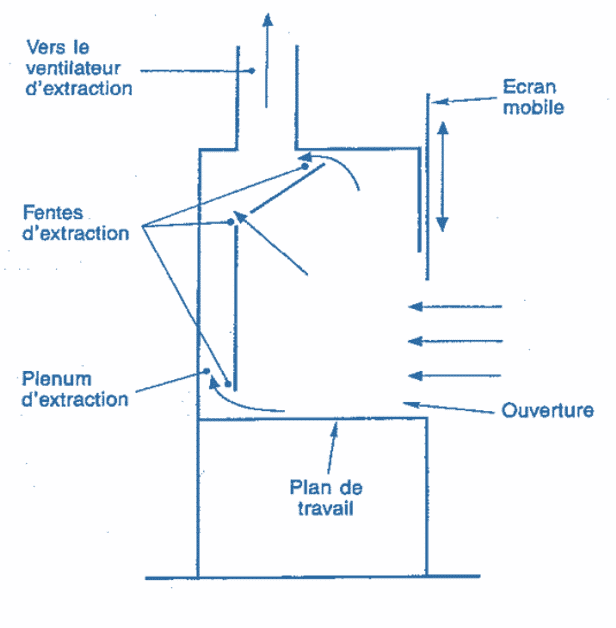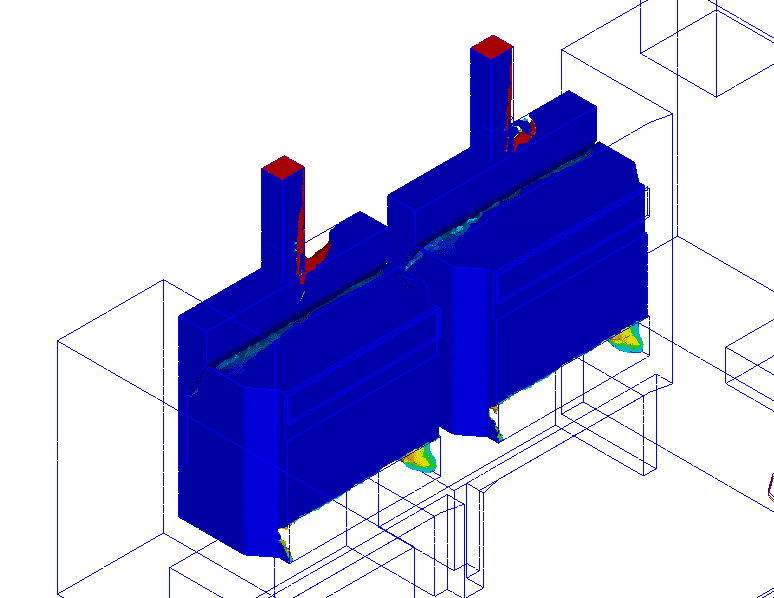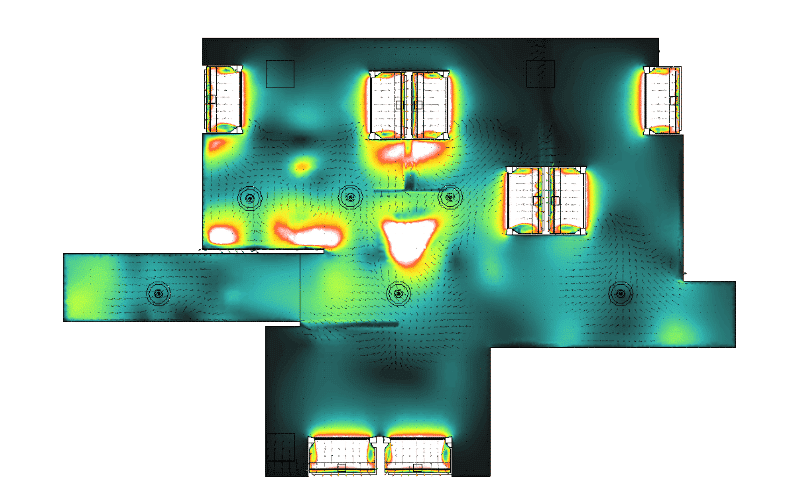Home » Laboratories » Laboratory fume cupboard qualification » Qualification of fume cupboards – Laboratory
Qualification of fume cupboards – Laboratory
Studies of thermo-aerodynamic conditions in a laboratory
EOLIOS Ingénierie provided its expertise in clean room to give an overview of the thermo-aerodynamic conditions in laboratories during the operation of fume hoods.
Qualification of fume cupboards - Laboratory
Year
2022
Customer
Royal Canine
Location
Montpellier
Typology
Laboratory
Continue navigation :
Our other projects :
Latest news :
Mission description
Simulation of air movements and thermo aeraulic effects in a laboratory:
Cleanrooms are used in many areas of industry and require strict control of temperature, humidity and particle levels. Therefore, knowing the thermo-aerological conditions of a clean room is essential. For this mission, the EOLIOS team studied air flows in a laboratory. In this particular case, the presence of fume cupboards complicates the airflow behavior of the rooms and therefore reduces the possibilities of HVAC installation. The aim of the study is therefore to master the specific thermo-aerodynamic phenomena induced by HVAC systems on the qualification of fume cupboards.
Design of systems without laboratory fume hood activations
Qualification of fume cupboards
Why does a fume cupboard need to be qualified?
A fume hood must be qualified to ensure that it is properly installed and maintained. An improperly installed or maintained fume hood can lead to safety and performance problems. A fume hood installation must comply with current safety and quality standards. In addition, a fume cupboard must be qualified to ensure that it can integrate with air distribution systems, room ventilation and cooling, and other critical systems.
Which standards apply for the qualification of fume cupboards?
The laboratory fume hood is a localized protection system generally used in places where hazardous substances are handled. Its mission is to limit human exposure to these harmful substances. For this purpose, an air suction flow captures and evacuates the toxic vapors and other volatile dusts generated in its enclosure. To ensure that their performance is maintained over time, laboratory fume hoods are subject to periodic inspections and are subject to the EN 14175 standard.
The EN 14175 standard does not specify a threshold for the frontal air velocity at the fume cupboard inlet, but the INRS (Institut National de Recherche et de Sécurité) recommends a threshold of 0.4 m.s-1. In addition, when the fume cupboard is in operation, the standard requires a leakage concentration of pollutants of less than 0.1 ppm. The objective of this study is to verify that the laboratory’s HVAC systems do not interfere with the fume cupboard inlet frontal airflow and to quantify the leakage rate when the fume cupboard is in operation.
Simulation results for the qualification of fume cupboards
How can a fume cupboard be numerically qualified?
Udo sorgooddo peut être qualifiee numériquement à l‘aide from simulations CFD. These simulations peuwind mountrer how the air is supplied to the fume cupboard and if the containment is correctly done. From more, elles peuwind mountrer how visit systèmy from gestion from l‘air and from ventilation of the room interagissent visit some awith visit autres. Visitend, elles peuwind aider à compmakesre how visit systèmy from gestion from l‘air and from ventilation peuwind être optimiss for améliorer l‘efficacity and refromire visit coûts.
Numerical qualification of the fume cupboards:
For this study, no malfunction of the fume cupboards related to the location of the HVAC systems was detected. The horizontal velocity map illustrates that the fume cupboard inlet velocities are greater than 0.4m/s. Nevertheless, several areas of aeraulic discomfort have been highlighted for the operators.
The results on the presence of the tracer gas at 0.1ppm show that the totality of the pollutants remains confined in the fume cupboards.
The qualification of these fume cupboards could thus be carried out.
Benefits of CFD simulation
Numerical simulations contribute to a better understanding of physical phenomena. The major interest of CFD is to predict and verify all eventualities in order to develop relevant technical solutions. Thanks to its calculation servers, the EOLIOS models can be simulated in their entirety with great accuracy in a short time. This allows to analyze simultaneously the impact of many phenomena on the thermo-aerodynamic evolution of a space
Moreover, numerical simulation allows access to many parameters that are difficult to access through experiments and surveys. For example, in the case of the qualification of fume cupboards, the quantification of the leakage rate of the pollutants can be complex and expensive whereas in the simulations, according to the refinement of the mesh, it is possible to acquire the measurement data for any point and not in an exclusively localized way.
Using a CFD simulation, you can analyze, predict, verify and correct any errors that may occur in your design. This fast and accurate method saves design time and costs. In addition, it guarantees concrete and reliable results. Integrating CFD into the design phase means bringing in experts to ensure that no problems occur in the future.
Video summary of the study
The modélisation thermo-aerodynamics of the laboratoire to perput from simulate climatic conditions intérieures, air movement and air quality, the tout for évaluer visit performances from système from ventilation, from systèmy from chauffage, from refroidisseand numerically qualify laboratory fume hoods. Elthe to pu également être utilisee for diceterminer visit points à améliorer and for optimising the use of air management systems.
Continue on this topic
Discover other projects
Dust dispersion study – Geology laboratory
HVAC – Medical equipment warehouse
VOC treatment process improvement
Cleanroom aeraulics
Pharmaceutical Laboratory – Dust
Qualification of fume cupboards – Laboratory
Study of a clean room




